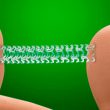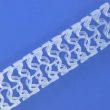Courtesy of Dr. Agustín Vecchia. In treating bifurcations, the provisional stenting strategy continues to be preferred. However, a percentage of these lesions must be treated with two stents, which involves different techniques. In provisional stenting, when two stents are required, a recent consensus document of the European Bifurcation Club has recently recommended the TAP<a href="https://solaci.org/en/2016/09/14/culotte-vs-tap-in-bifurcations-which-is-better/" title="Read more" >...</a>
Dual Antiplatelet Therapy in Men and Women: Are There Differences?
Courtesy of Dr. Agustín Vecchia. Currently, the duration of dual antiplatelet therapy (DAPT) after stent placement is one of the most highly debated topics in Cardiology. On the one hand, women are usually underrepresented in trials in our specialty; on the other, the fact that symptoms of coronary disease are different in women is well-known. The aim<a href="https://solaci.org/en/2016/09/12/dual-antiplatelet-therapy-in-men-and-women-are-there-differences/" title="Read more" >...</a>
Xience V: Safe in “Real-Life” Bifurcation Lesions
Courtesy of Dr. Rodrigo Abreu. INTRODUCTION Bifurcation lesion treatment has evolved considerably in the last years: from balloon angioplasty (with high occlusion and restenosis rates) to bare metal stent angioplasty (with a procedural success around 86% and major adverse cardiac events [MACE] at 1 year around 32%). The subsequent emergence of drug-eluting stents (DES) reduced<a href="https://solaci.org/en/2016/09/09/xience-v-safe-in-real-life-bifurcation-lesions/" title="Read more" >...</a>
DES: Best Option in Saphenous Vein Grafts
These results confirm that, despite being used less and less worldwide, DES (drug eluting stents) are the best option in saphenous vein grafts. Saphenous vein graft atherosclerosis has a different pathophysiology to that of native arteries, and PCI in this context is less effective because of high risk of friable thromboembolic material, faster plaque<a href="https://solaci.org/en/2016/09/07/des-best-option-in-saphenous-vein-grafts/" title="Read more" >...</a>
BVS: Safe and Effective in the Infrapatellar Area
Courtesy of Dr. Carlos Fava. Drug-eluting stents (DES) have shown mid-term benefit in lesions below the knee (BTK) by reducing the rate of acute occlusion and restenosis in type A and B lesions. However, failure to recover the self-regulatory functions of the local vessel could hinder future revascularization. Drug-eluting bioresorbable scaffolds (BVS) could be a solution to this problem.<a href="https://solaci.org/en/2016/09/02/bvs-safe-and-effective-in-the-infrapatellar-area/" title="Read more" >...</a>
Coronary Perforation in PCI: Associated to Negative Outcomes
Courtesy of Dr. Guillermo Migliaro. Coronary perforation (CP) is a rare but serious complication of percutaneous coronary intervention (PCI) with an estimated incidence of 0.5%. Arterial blood entering the pericardium may cause a rapid elevation of intrapericardial pressure and collapse the right cavities (tamponade) creating hemodynamic compromise. Historically, surgical drainage has been the<a href="https://solaci.org/en/2016/08/31/coronary-perforation-in-pci-associated-to-negative-outcomes/" title="Read more" >...</a>
Anticoagulation and PCI: How Long Should Triple Therapy Last?
The aim of this study was to compare clinical outcomes in relation to the duration of triple antithrombotic therapy in patients with indications for oral anticoagulation undergoing coronary angioplasty. The optimal period for the prescription of these three drugs has not been studied. Between 2009 and 2013, 8772 consecutive patients undergoing coronary angioplasty were included<a href="https://solaci.org/en/2016/08/30/anticoagulation-and-pci-how-long-should-triple-therapy-last/" title="Read more" >...</a>
Optimal Duration of DAPT: How to Predict Long-Term Events
Courtesy of Dr. Santiago F. Coroleu. Dual antiplatelet therapy (DAPT) with aspirin and clopidogrel after percutaneous coronary intervention (PCI) reduces the risk for coronary thrombotic events (CTEs) at the expense of increasing risk for major bleeding (MB). However, the lack of information to accurately predict the occurrence of each event in out-of-hospital patients under<a href="https://solaci.org/en/2016/08/17/optimal-duration-of-dapt-how-to-predict-long-term-events/" title="Read more" >...</a>
DES in primary PCI: The Best Option?
Courtesy of Dr. Brian Nazareth Donato. The relative safety of drug-eluting stents (DES) and conventional bare-metal stents (BMS) in primary angioplasty (percutaneous coronary intervention, PCI) in patients with ST elevation myocardial infarction (STEMI) is still subject of debate. A search was carried out using Medline, CENTRAL, EMBASE, TCTMD and Cardiosource. There were 9673 patients included,<a href="https://solaci.org/en/2016/08/10/des-in-primary-pci-the-best-option/" title="Read more" >...</a>
BVS: Comparable to Second-Generation DES in Complex Lesions
A center carrying out a mid- to long-term follow-up of the performance of everolimus-eluting bioresorbable scaffolds (Absorb) observed that this new device has an acceptable rate of major cardiovascular events, when compared to second-generation drug-eluting stents. Furthermore, although the population was complex and non-selected, no cases of early thrombosis were reported. This study enrolled 249 patients<a href="https://solaci.org/en/2016/08/03/bvs-comparable-to-second-generation-des-in-complex-lesions/" title="Read more" >...</a>









